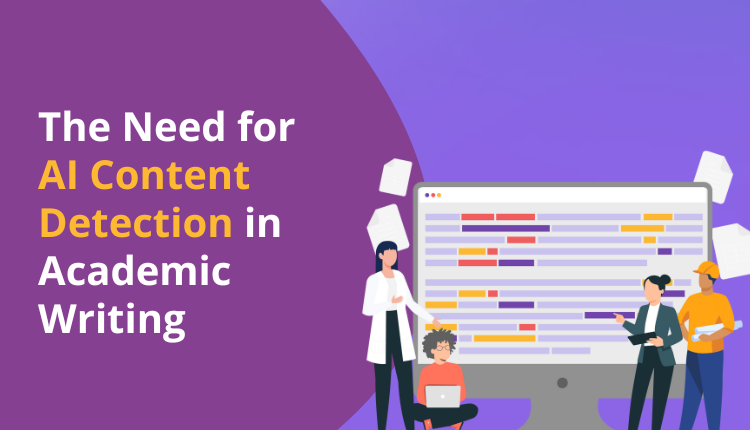In the current academic and professional environment, AI writing tools are in great demand to facilitate writing, editing, and content creation. Though AI is convenient and quick, it also spells trouble for originality, authenticity, and intellectual honesty. That is why AI content detectors are gaining greater significance; they identify whether a document is written by a human or created with an AI tool.
With more institutions and publishing houses adopting policies to control content generated by AI, an effective AI detector has become a must-have for students, researchers, educators, and editors.
Why Are AI Content Detectors Important?
AI detectors act as a guard post for responsible writing. As more sophisticated text-generation AI tools become more widely available, it has never been simpler for someone to turn in AI-generated content without acknowledging it. This can both compromise academic integrity and dilute human critical thinking and research.
AI content detectors are important because:
1] Preserve Academic Integrity: They can ensure submitted content expresses a student’s or writer’s independent ideas and effort.
2] Support Ethical Publishing: For academic journals and conferences, identifying AI content ensures high scholarly merit.
3] Enhance Transparency: Authors can willingly verify and edit AI-influenced portions prior to submission.
4] Help Educators and Reviewers: Facilitates identifying content that is perhaps not original enough.
Where Can AI Content Detectors Be Used?
AI content detection software is beneficial in many academic and professional environments:
1] Universities and Colleges: In assessing student assignments, essays, research papers, and theses.
2] Academic Journals: To filter manuscript submissions and verify adherence to ethical publishing practices.
3] Research Institutions: To authenticate the source of reports, proposals, and findings.
4] Freelance and Technical Writing: For proofreaders and editors who must determine the source of submitted materials.
5] Corporate Training and Education: To confirm original ideas in white papers, e-learning content, and internal reports.
Trinka’s Free AI Content Detector Tool
For anyone who wants a reliable AI detection tool that is tailor-made for scholarly and professional usage, Trinka’s Free AI Content Detector stands out as an exceptional tool. Developed by the developers of Trinka.ai, this detector is meant to evaluate scholarly and technical writing with utmost accuracy.
Key Features of Trinka’s AI Content Detector:
1] Totally Free: No account or payment needed.
2] Fast Detection: Get results within seconds after submitting your text or uploading a document.
3] Academic-Focused Analysis: Tailored for formal, research-based writing styles.
4] Clear Probability Scores: Provides a visual breakdown showing the likelihood that parts of the content were generated by AI.
5] Supports Multiple Formats: Users can paste content or upload documents in formats such as .docx and .pdf.
6] Privacy-First Design: Content is never stored or reused to guarantee absolute confidentiality.
Trinka’s AI Content Detector is easy to use
1] Go to the AI Content Detector page at Trinka’s website.
2] Copy and paste your content or upload your file.
3] Click “Detect AI Content.”
4] See a detailed report with the AI probability of your content.
This instant feedback enables writers to edit AI-generated parts if needed, making their work compliant with academic or editorial requirements.
Conclusion
AI writing software can increase efficiency yet pose problems with academic integrity and originality. AI content detectors serve as a security check, ensuring that writers, teachers, and publishers can trust the process of writing. Trinka’s free AI Content Detector provides a user-friendly, efficient, and privacy-friendly method for confirming human authorship of your content, particularly in academic and research situations.
As we progress in the age of AI, employing tools such as this not only enhances the validity of written content but also ensures responsible and moral application of technology in education and publishing.

